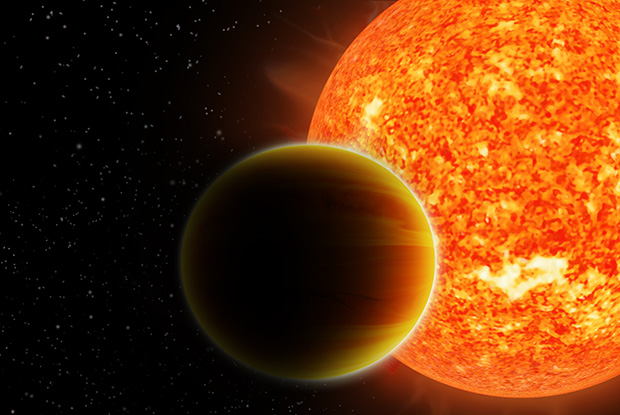Good news and bad news for alien water
Submitted by jonevans on 24 July 2014 - 1:36pm

The good news is that astronomers from the UK and the US have confidently detected water vapour in the atmosphere of three alien planets with the NIR spectrometer on board the Hubble Space Telescope. The bad news is that they detected much less water than expected.
‘Our water measurement in one of the planets, HD 209458b, is the highest-precision measurement of any chemical compound in a planet outside the solar system, and we can now say with much greater certainty than ever before that we've found water in an exoplanet,’ says team leader Nikku Madhusudhan at the University of Cambridge. ‘However, the low water abundance we are finding is quite astonishing.’
As reported in Astrophysical Journal Letters, Madhusudhan and his team detected water in the atmosphere of three alien plants, or exoplanets – HD 209458b, HD 189733b and WASP-12b – all of which are ‘hot Jupiters’, meaning they are gas giants that orbit very close to their star. Current theories of planet formation, based mainly on the make-up of our own solar system, predict that the atmospheres of gas giants should contain a reasonable amount of water vapour. Hot Jupiters are thought to have formed in the same way as our own gas giants and at the same distance from their star, but then to have migrated inwards.
Madhusudhan and his team have now raised doubts about this model by detecting far less water vapour than expected, between one-tenth and one-thousandth of the predicted amount. ‘It basically opens a whole can of worms in planet formation,’ explains Madhusudhan. ‘We expected these planets to have lots of water in their atmospheres. We have to revisit planet formation and migration models of giant planets, especially hot Jupiters, to investigate how they're formed.’
These investigations will benefit from observations made with the forthcoming generation of more advanced telescopes and analytical instruments, as will the even harder task of detecting water vapour in the atmosphere of Earth-like exoplanets. ‘These findings highlight the need for high-precision spectroscopy – additional observations from the Hubble Space Telescope and the next-generation telescopes currently in development will make this task easier,’ says team member Drake Deming from the University of Maryland.